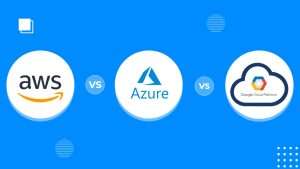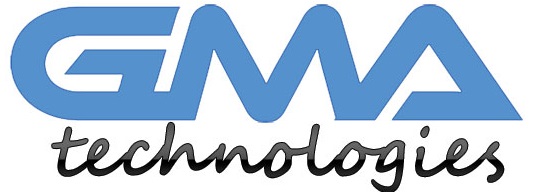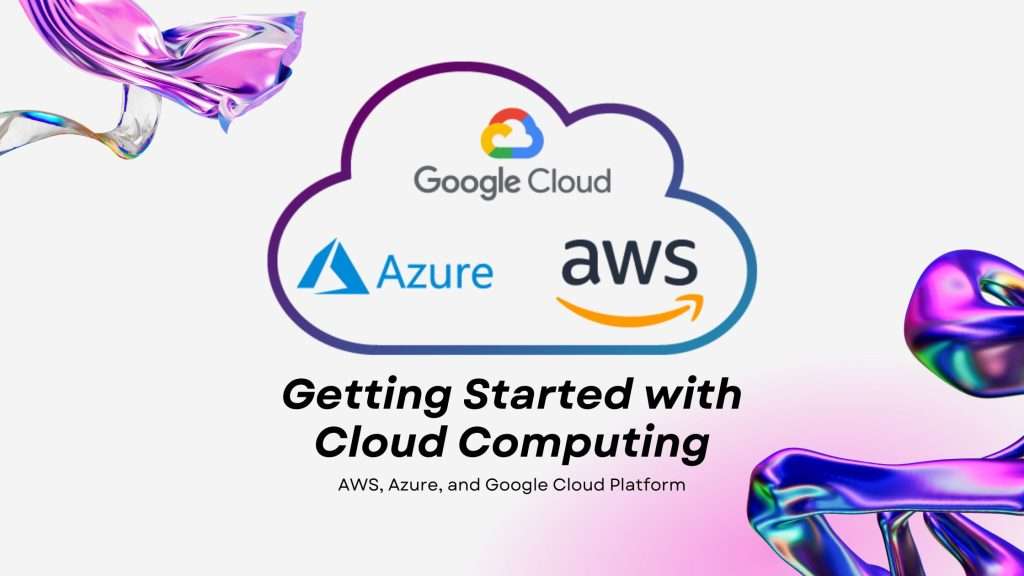Are you ready to soar high in the ever-evolving realm of cloud computing? 🌥️✨ Look no further, as we embark on an exciting journey into three of the most prominent players in this field: AWS, Azure, and Google Cloud Platform. Whether you’re a tech enthusiast seeking to expand your knowledge or a business owner considering leveraging the power of these platforms,
this blog post is your ultimate guide to successfully navigate through the clouds and kickstart your cloud computing adventure! Let’s buckle up and explore how these giants can propel us towards innovation and efficiency like never before. 💻🚀
Introduction to Cloud Computing
If you’re new to the world of cloud computing, you might be wondering what all the hype is about. Cloud computing is a way to use technology to make it easier for businesses to work together and share resources over the internet. It’s a way of working that’s becoming more and more popular, as it offers a number of advantages over traditional methods of working.
In this section, we’ll introduce you to the basics of cloud computing, so you can decide if it’s right for your business. We’ll start by explaining what cloud computing is, before moving on to look at the different types of cloud services that are available. We’ll also explore some of the benefits of using cloud services, so you can see why they’re become such a popular choice for businesses.
Overview of the Different Cloud Platforms (AWS, Azure, and Google Cloud Platform)
There are three major cloud providers in the market today: Amazon Web Services (AWS), Microsoft Azure, and Google Cloud Platform (GCP). Each provider has its own strengths and weaknesses, so it’s important to understand the different offerings before deciding which one is right for your needs.
AWS is the most popular cloud platform on the market, with a lead of nearly 50% over its closest competitor, Azure. AWS offers a comprehensive set of services and features, making it a good choice for businesses that want a one-stop shop for all their cloud needs. However, AWS can be more expensive than other options, so it’s important to compare pricing before committing to a platform.
Azure is a close second to AWS in terms of market share, and it offers many of the same features as AWS. Azure is a good choice for businesses that want access to Microsoft’s extensive ecosystem of products and services. However, Azure can be more difficult to use than other options, so it’s important to consider your team’s expertise before choosing this platform.
GCP is the third major cloud platform on the market, but it lags behind AWS and Azure in terms of market share. GCP is a good choice for businesses that want access to Google’s extensive ecosystem of products and services. However, GCP can be more expensive than other options, so it’s important to compare pricing before committing to a platform.
The Benefits of Using Each Platform
Cloud computing platforms offer many benefits, including the ability to scale elastically, pay for only what you use, and enjoy increased collaboration and productivity. Each platform has its own unique benefits that can help your business achieve its goals.
AWS provides a comprehensive set of cloud computing services that are easy to use and scalable. AWS offers a pay-as-you-go pricing model that allows you to only pay for the resources you use. AWS also offers a wide range of services, including storage, computing, networking, and database.
Azure is a cloud computing platform that offers both Platform as a Service (PaaS) and Infrastructure as a Service (IaaS). Azure offers a variety of services, including storage, databases, networking, and compute. Azure also offers an extensive worldwide network with high availability and security.
Google Cloud Platform (GCP) is a cloud computing platform that offers both IaaS and PaaS. GCP offers a variety of services, including storage, databases, networking, and compute. GCP also has an extensive global network with high availability.
Comparing AWS, Azure, and GCP
There are three major cloud service providers (CSPs) today: Amazon Web Services (AWS), Microsoft Azure, and Google Cloud Platform (GCP). Each has its own strengths and weaknesses, so it’s important to understand the differences before choosing a provider.
AWS is the most comprehensive and widely adopted cloud platform, offering more than 175 services including compute, storage, database, networking, analytics, artificial intelligence (AI), and Internet of Things (IoT). AWS is also the most mature of the three CSPs, with the largest number of customers and the broadest range of services.
Azure is a close second to AWS in terms of market share and capabilities. Azure offers 170+ services including compute, storage, database, networking, analytics, AI, and IoT. One key difference between Azure and AWS is that Azure includes first-party managed services from Microsoft—such as Office 365—whereas AWS does not offer any first-party managed services.
GCP is the smallest of the three major CSPs but is growing rapidly. GCP offers more than 160 products including compute, storage, database, networking , analytics, AI, and IoT. GCP’s competitive advantages include tighter integration with big data (it powers Google Search) and advanced machine learning (ML) tools.
When comparing the three CSPs, consider your specific needs for compute, storage, networking, AI/ML, and other services. All three offer comparable pricing based on pay-as-you-go models, though AWS has more options for upfront payment discounts. Ultimately the best choice depends on which platform best meets your specific requirements.

Choosing the Best Platform for Your Needs
When it comes to cloud computing, there are three major platforms to choose from: Amazon Web Services (AWS), Microsoft Azure, and Google Cloud Platform (GCP). Each platform has its own strengths and weaknesses, so it’s important to choose the one that best fits your needs.
AWS is the most popular cloud platform, and for good reason. It’s feature-rich and scalable, making it a good choice for businesses of all sizes. However, it can be expensive, and some find its interface confusing.
Azure is a close second to AWS in terms of popularity. It’s a bit cheaper than AWS and offers many of the same features. However, Azure can be difficult to learn and use, which may not make it the best choice for small businesses or those new to cloud computing.
GCP is the third major player in the cloud computing space. It’s not as widely used as AWS or Azure, but it has its fans. GCP is known for being easy to use and having excellent customer support. However, it doesn’t offer as many features as the other two platforms.
So, which platform should you choose? It depends on your needs. If you’re looking for a powerful and feature-rich platform that can handle anything you throw at it, AWS is a good choice. If you want a cheaper option that’s still pretty good, go with Azure. And if you’re new to cloud computing and just want something that ‘s easy to use, GCP is your best bet.
No matter what platform you choose, make sure you take the time to evaluate your needs and research each option before making a decision. That way, you’ll be sure that you select the best platform for your business.
Setting Up Your Account and Getting Started
Assuming you’ve never used cloud computing before, this guide will walk you through the basics of setting up an account and getting started with the three major providers: Amazon Web Services (AWS), Microsoft Azure, and Google Cloud Platform (GCP).
Creating an account with a cloud provider is similar to signing up for any other online service. You’ll need to provide some basic information about yourself and your organization, including a credit card or bank account so that the provider can bill you for services used. Some providers may also require you to verify your identity by providing a government-issued ID.
Once you’ve created an account, you can start using cloud services immediately. Most providers offer a free trial period with some limited services so that you can explore what they have to offer without incurring any charges. After the free trial period ends, you’ll be billed according to the plan you choose. The three providers all offer different pricing models, so be sure to review each one carefully before selecting a plan.
AWS, Azure, and GCP all offer a wide range of services, so it can be helpful to consult their documentation or talk to someone who’s familiar with them before getting started. That way, you can better understand what each service does and how it might be useful for your needs. Once you have a general understanding of the capabilities of each platform, you can begin experimenting with the various services to see how they fit into your workflow.
No matter which provider you choose, cloud computing can provide a great way to increase the scalability and reliability of your applications. With the right plan and an understanding of how the different services work together, you can get up and running in no time.
Common Mistakes When Moving to a Cloud Infrastructure
There are many potential pitfalls when moving to a cloud infrastructure. Here are some of the most common mistakes:
Failing to properly assess workloads: One of the most common mistakes is failing to properly assess which workloads are best suited for the cloud. Not all workloads are created equal, and some are more resource intensive than others. Make sure you have a good understanding of your workloads before making the switch to the cloud.
Not taking advantage of autoscaling: Autoscaling is one of the key benefits of a cloud infrastructure. Don’t make the mistake of not taking advantage of this feature – it can help you save a lot of money in the long run.
Underestimating data security needs: Another common mistake is underestimating the importance of data security. When you move to the cloud, you lose some control over your data security. Make sure you have a strong security plan in place before making the switch.
Failing to properly plan for costs: One of the biggest mistakes companies make when moving to a cloud infrastructure is failing to properly plan for costs. Cloud computing can be very cost-effective, but only if you know how to use it effectively. Make sure you have a clear understanding of your company’s needs and budget before making the switch.
Not researching the right vendor: Do your research when choosing a cloud vendor. You want to find one that has experience and offers quality services at a reasonable price. Taking shortcuts here can lead to costly mistakes in the long run.
Security Considerations for Cloud Computing
Security is a top concern when moving to the cloud. By its very nature, cloud computing means entrusting your data to a third party. However, there are steps you can take to ensure your data is secure in the cloud.
When choosing a cloud provider, be sure to do your research and select a reputable company with a strong security track record. Once you’ve selected a provider, make sure you’re taking advantage of all the security features they offer. For example, most providers offer data encryption and access control measures that you can use to further secure your data.
Always remember that security is a shared responsibility between you and your cloud provider. Be sure to keep your own systems up-to-date and secure, and never hesitate to contact your provider if you have any questions or concerns about their security measures.
Conclusion
Cloud computing is a rapidly growing technology and can provide an organization with incredible advantages. The three biggest providers- AWS, Azure, and Google Cloud Platform- all have excellent features that make them attractive choices for cloud deployment.
Knowing the key differences between these providers and how to get started is essential in order to determine which one best meets your needs. With a bit of research and planning, you should be able to quickly find the right cloud solution for your specific business scenarios.

